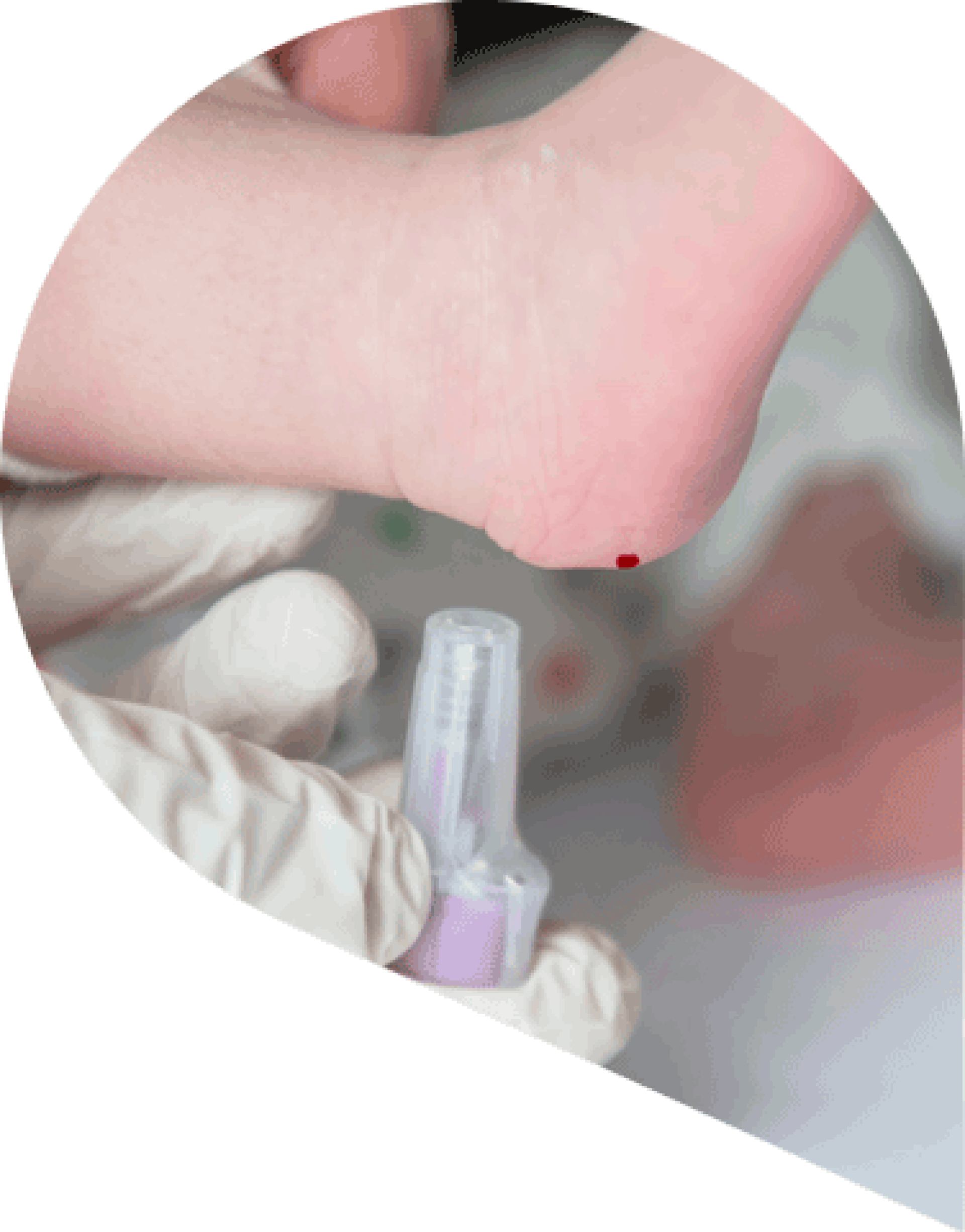Maple Syrup Urine Disease (MSUD)
The following information provides a general overview of Maple Syrup Urine Disease and is intended for educational purposes only. It should not replace guidance from qualified healthcare professionals. Vitaflo™ International Limited accepts no responsibility for any loss resulting from reliance on the content. For comprehensive and up-to-date recommendations, please refer to national and international clinical guidelines.
What is Maple Syrup Urine Disease?
Maple Syrup Urine Disease (MSUD) is an inherited, autosomal, recessive disorder of branched-chain amino acid (BCAA) metabolism1.
MSUD can be divided into 5 types2:
- Classic MSUD
- Intermediate MSUD
- Intermittent MSUD
- Thiamin‐responsive
- Dihydrolipoamide dehydrogenase deficiency (E3‐deficiency)
These types are diagnosed according to severity and clinical presentation. The classical form is the most common and most severe1.
The following information on this webpage refers to classic MSUD only.
What is the cause of Maple Syrup Urine Disease?
Classic Maple Syrup Urine Disease (MSUD) is caused by a deficiency of a complex of three enzymes named Branched-Chain 2‐Ketoacid Dehydrogenase (BCKD).
The role of BCKD is to break down the three Branched-Chain Amino Acids (BCAAs):
- Leucine
- Isoleucine
- Valine
However, patients with MSUD have a defective BCKD complex, causing a build-up of the BCAAs and their associated keto acids, which become toxic to the body.
If untreated, these result in irreversible, neurologic impairments and possible death.
*Note: you may find our condition-specific resource helpful, intended for use with patients and families to explain the complex science behind the inheritance of Maple Syrup Urine Disease, diagnosis and management.
For further information on resources available, please enquire: Contact page
Symptoms of Maple Syrup Urine Disease
Untreated classic Maple Syrup Urine Disease (MSUD) patients may present with2:
- Poor feeding
- Sweet smell (both urine and sweat)
- Vomiting
- Encephalopathy (damage to the brain)
- Cerebral oedema
- Irritability
- Hypoglycaemia
- Lethargy
- Seizures
Symptoms occur soon after birth, which can lead to permanent brain damage and death if left untreated2.
Long-term, some children can suffer from varying levels of inattention, hyperactivity, generalised anxiety, depression and movement disorders2.
The classical form of MSUD is the most common and the most severe, with 0-2% residual enzyme activity1.
Testing for Maple Syrup Urine Disease: newborn screening

Classic Maple Syrup Urine Disease (MSUD) can be detected via Newborn Screening (NBS); however, NBS is not widely available due to the rarity of the condition.
The presence of leucine suggests a diagnosis of MSUD requiring further investigation and possible immediate management3.
How common is Maple Syrup Urine Disease?
The prevalence of Maple Syrup Urine Disease is 1 in 150,0002; however, rates as high as 1 in 400 have been observed in specific populations1.
How is Maple Syrup Urine Disease managed?
The primary aim of the management of classic Maple Syrup Urine Disease (MSUD) is to reduce the levels of toxic metabolites4.
This involves a life-long therapeutic diet and care by a multidisciplinary team, which is essential for normal growth and development2,4.
As plasma leucine levels are usually more elevated than isoleucine and valine, dietary manipulation involves limiting leucine intake.
There are five main components of the dietary management of MSUD3-4:
- Avoidance of high protein foods
- A measured amount of leucine titrated to the patient's biochemistry
- Low protein foods
- Protein substitutes
- Emergency regimen
In some cases, reducing blood leucine levels to an acceptable range can lead to an excessive decrease in isoleucine and valine levels, which may require supplementation.
Avoidance of high-protein foods
High levels of leucine are present in many foods that contain protein, such as:
- meats
- fish
- eggs
- nuts
- milk
- dairy products
- soya
- and many more
To help maintain metabolic stability, it is important that protein intake is restricted, which often means avoiding high protein foods.

Example of high protein foods
A measured amount of leucine from food according to patient tolerance
As leucine is an essential amino acid, a small, measured amount of leucine from food must be included in the diet to prevent deficiency3-4.
The amount of leucine that an individual with Maple Syrup Urine Disease (MSUD) can safely consume without the leucine levels and other metabolites accumulating to toxic levels is known as protein tolerance and will vary from individual to individual.
The system used to ensure an adequate leucine intake in the diet, without exceeding tolerance, varies between countries. One example is a leucine exchange system. This helps to categorise and count foods according to leucine content (such as checking the nutritional information or the ingredients).
Low protein foods
As well as avoiding high protein foods, incorporating low-protein foods is equally essential for the dietary management of MSUD.
They can be foods naturally low in protein, such as most fruits and some vegetables, fats, oils and many high-sugar foods. Specially manufactured foods, such as bread, milk alternatives, flour mixes, pasta and rice, subject to availability, can also be used.
These types of foods can help provide increased variety, energy, and a sense of normality to patients’ diets, allowing for versatility in meals and flavours across the week.

Protein substitutes
Although natural protein tolerance is low in MSUD, total protein requirements are like those of individuals without MSUD.
Total protein requirements will not be met by the small amount of natural protein, which can be as low as 2-7g per day1,4-5, that MSUD patients would consume through their diet.
Therefore, to help achieve an adequate protein intake in MSUD patients, products called protein substitutes are essential. They provide a suitable branched-chain amino acid (BCAA) free protein source and ensure all other essential amino acids and nutrients are supplied to support normal protein synthesis for growth and to prevent catabolism1-4. Typically, most MSUD patients consume their protein substitute with meals, spread evenly throughout the day.
Emergency Regimen
During periods of illness, emergency regimes are put in place to avoid catabolism. An emergency or ‘sick day’ regimen (ER) is used to help prevent metabolic decompensation and can be very effective in reducing episodes and hospital admissions4,6.
The ER typically comprises a high energy intake in combination with an increased amount of their usual BCAA free protein substitute, and additional isoleucine and valine supplements4,6.
How is Maple Syrup Urine Disease managed in infants?
An infant with Classic maple syrup urine disease (MSUD) will present within 24 hours or the first few days of life with the aroma of maple syrup present in their urine, ear wax and sweat2.
Without immediate management, infants with MSUD can rapidly deteriorate with ketoacidosis, hypoglycaemia, and potentially progress into a coma2.
The priority is to lower plasma leucine levels quickly, which may necessitate haemofiltration or haemodialysis, in conjunction with dietary measures. Dietary management in this acute phase involves branched-chain amino acid (BCAA) restriction, supplementation with a BCAA free formula in combination with a high energy intake2-4,7.
Tube feeding may be required to achieve nutritional requirements.
Once leucine levels have returned to an acceptable level, breast milk or standard infant formula can be introduced alongside the BCAA free formula.
Breastfeeding offers many benefits to mothers and infants, and a family should be supported in making the appropriate choice for their family, if deemed appropriate by the metabolic healthcare team.
A specialist metabolic team should be responsible for the management of the individual with MSUD from diagnosis and throughout life.
- Strauss KA, Carson VJ, Soltys K, Young ME, Bowser LE, Puffenberger EG, et al. Branched-chain α-ketoacid dehydrogenase deficiency (maple syrup urine disease): treatment, biomarkers, and outcomes. Mol Genet Metab. 2020;129:193–206. https://doi.org/10.1016/j.ymgme.2020.01.006
- Strauss KA, Puffenberger EG, Carson VJ. Maple syrup urine disease. 2006 Jan 30 [updated 2020 Apr 23]. In: Adam MP, Feldman J, Mirzaa GM, Pagon RA, Wallace SE, Bean LJ, et al., editors. GeneReviews® [Internet]. Seattle (WA): University of Washington, Seattle; 1993–2024. Available from: https://www.ncbi.nlm.nih.gov/books/NBK1319/
- Frazier DM, Allgeier C, Homer C, Marriage BJ, Ogata B, Rohr F, et al. Nutrition management guideline for maple syrup urine disease: an evidence- and consensus-based approach. Mol Genet Metab. 2014;112:210–7. https://doi.org/10.1016/j.ymgme.2014.05.006
- Dixon M, MacDonald A, White F. Disorders of amino acid metabolism, organic acidaemias and urea cycle disorders. In: Shaw V, editor. Clinical paediatric dietetics. 5th ed. Hoboken (NJ): Wiley-Blackwell; 2020. p. 513–98.
- O’Reilly D, Crushell E, Hughes J, Ryan S, Rogers Y, Borovickova I, et al. Maple syrup urine disease: clinical outcomes, metabolic control, and genotypes in a screened population after four decades of newborn bloodspot screening in the Republic of Ireland. J Inherit Metab Dis. 2020;44:639–55. https://doi.org/10.1002/jimd.12337
- Dixon M. Emergency regimens for inherited metabolic disorders. In: Shaw V, editor. Clinical paediatric dietetics. 5th ed. Hoboken (NJ): Wiley-Blackwell; 2020. p. 673–80.
Related products
Browse the products available for managing this condition.
Information presented on this page is intended for healthcare professional use only. Food for Special Medical Purposes to be used under medical supervision.
Date of publication: 20/5/2025




